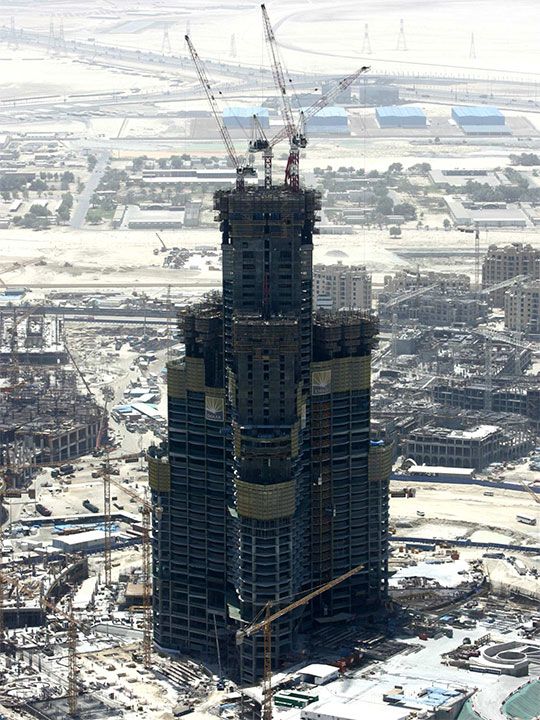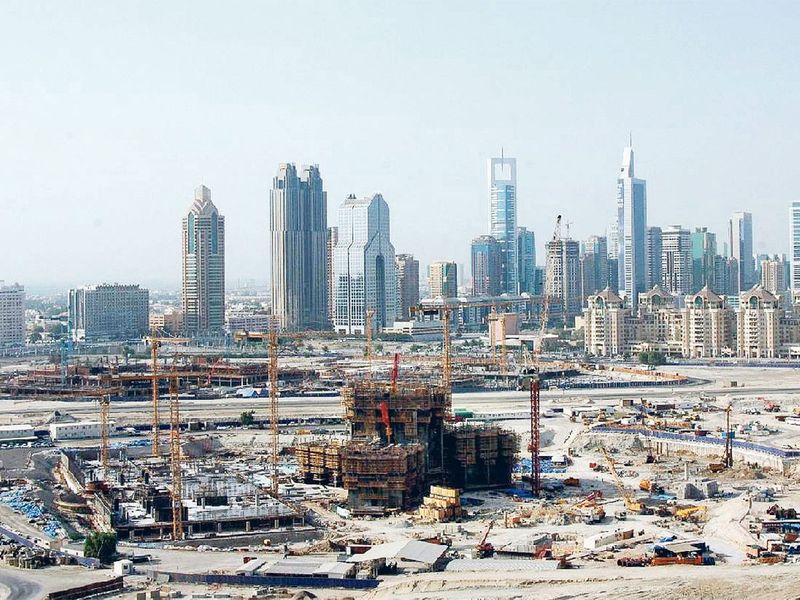What was the total cost of constructing Burj Khalifa?
The cost of constructing Burj Khalifa stands as a testament to the remarkable achievements in architecture and engineering. This towering marvel is not only an iconic building but also a symbol of human ingenuity and architectural excellence.
When discussing the Burj Khalifa, one cannot ignore the significant cost of constructing Burj Khalifa associated with such a grand project. The construction of this skyscraper required substantial financial investment due to its scale, complexity, and design innovations. The cost breakdown in construction encompassed various elements, including materials, labor, cutting-edge technologies, and meticulous planning.
Skyscraper construction, especially when it comes to a structure as awe-inspiring as the Burj Khalifa, involves a myriad of challenges and solutions. The architects and engineers behind this masterpiece had to overcome unique hurdles related to its immense height, wind loads, and structural integrity. Their innovative approaches and engineering prowess enabled the realization of this architectural feat.
The Burj Khalifa is not just a mere building; it represents an architectural and engineering marvel that captivates the world with its grandeur and beauty. Its impressive height and sleek design make it one of the most recognizable and iconic buildings globally, serving as a symbol of human ambition and architectural ingenuity.
In the realm of tall buildings, the cost of constructing Burj Khalifa has set new benchmarks for design and engineering. Its innovative features and state-of-the-art technologies have pushed the boundaries of what is possible in constructing skyscrapers. The success of the Burj Khalifa has paved the way for future architectural achievements and inspired a new generation of designers and engineers to dream big and create even more awe-inspiring structures.

The Burj Khalifa stands tall as a testament to human creativity, determination, and the endless possibilities of architecture and engineering. Its remarkable presence on the Dubai skyline serves as a constant reminder of what can be achieved when visionary minds come together to push the limits of what is possible in the world of construction.
Introduction to Burj Khalifa and its Significance in Architectural History
The Burj Khalifa, a marvel of modern architecture and engineering, stands tall as one of the most impressive architectural projects ever conceived. Its construction was an ambitious endeavor, with meticulous attention to detail and groundbreaking design innovations in tall buildings. The cost of constructing Burj Khalifa was monumental, reflecting the scale of this architectural achievement.
As an iconic building, the Burj Khalifa represents more than just its physical stature. It symbolizes human ingenuity, pushing the boundaries of what is possible in construction and design. The cost breakdown in construction reveals the immense investment required to bring this vision to life.
Throughout its development, the Burj Khalifa faced numerous construction challenges and solutions. The engineering team overcame obstacles related to wind loads, foundation design, and vertical transportation, among others. These triumphs highlight the expertise and innovation involved in creating such a towering masterpiece.

The Burj Khalifa’s architectural achievements have left an indelible mark on the world. Its towering presence and distinctive design have made it one of the most recognizable and admired iconic buildings globally. It serves as a testament to human creativity and the pursuit of architectural excellence.
In summary, the cost of constructing Burj Khalifa is a testament to the potential of skyscraper construction and a shining example of the union between architecture and engineering. Its impressive stature, innovative design, and the challenges overcome during its construction make it an awe-inspiring architectural achievement. The Burj Khalifa stands as a symbol of human achievement and represents a significant milestone in the history of architecture.
Factors Influencing the Cost of Construction
When it comes to the construction cost of projects like skyscrapers or other impressive architectural projects, several key factors come into play. Understanding these factors can provide valuable insights into the cost breakdown in construction and help mitigate challenges while striving for architectural achievements.
First and foremost, architecture and engineering play a crucial role. The complexity of the design, including design innovations in tall buildings, can significantly impact costs. Unique features, intricate structural systems, and specialized materials all contribute to the overall expenses.

Additionally, construction challenges and solutions influence the cost. Overcoming obstacles such as site conditions, environmental regulations, and logistical constraints require creative problem-solving and may incur additional expenses.
Moreover, factors like labor costs, material availability, and market conditions can impact the cost of construction. Skilled labor, high-quality materials, and fluctuations in supply and demand can all contribute to the final price tag.
It’s worth noting that the location of the project also matters. Building in densely populated urban areas or areas with limited access to resources can drive up costs due to increased transportation expenses and the need for specialized equipment.
Furthermore, the cost of constructing Burj Khalifa was influenced by the desired level of sustainability and energy efficiency. Incorporating eco-friendly technologies and meeting stringent environmental standards required additional investments upfront but resulted in long-term cost savings.
Lastly, the scale and ambition of the project itself play a role. Constructing iconic buildings like the Burj Khalifa involves a level of grandeur and complexity that often translates into higher costs.
Breakdown of the Total Cost: Unveiling the Anatomy of Construction Expenses
When it comes to the awe-inspiring realm of skyscraper construction and impressive architectural projects, understanding the cost of constructing Burj Khalifa is paramount. Let’s delve into the intricate layers that compose the Burj Khalifa construction cost, examining the key elements of materials, labor, and engineering.
Materials form the foundation of any construction endeavor. From the robust steel framework to the precision-cut glass panels, every component contributes to the soaring structure. The selection of high-quality materials, often accompanied by rigorous testing and certification, ensures durability and architectural longevity.

Behind the scenes, skilled architecture and engineering professionals orchestrate the symphony of design and technical expertise. Their innovative ideas and design innovations in tall buildings pave the way for groundbreaking achievements, while intricate calculations and meticulous planning bring the vision to life.
Of course, the true essence of construction lies in the hands of the labor force. Highly skilled artisans, craftsmen, and construction workers lend their expertise to shape and assemble each piece of the architectural puzzle, contributing to the cost of constructing Burj Khalifa. Their tireless dedication, precision, and attention to detail form the backbone of the project’s success.
Navigating through the labyrinth of construction challenges demands nimble problem-solving and collaborative solutions. From intricate logistical planning to overcoming unforeseen obstacles, the industry’s ability to adapt and find creative resolutions is crucial in achieving remarkable architectural achievements.
As the final brushstrokes are applied to the masterpiece, the collective efforts culminate in the creation of an iconic building that stands as a testament to human ingenuity and perseverance.
Navigating Construction Challenges: Unveiling the Path to Architectural Triumph
The realm of skyscraper construction and impressive architectural projects is not without its hurdles. Amidst the monumental ambitions and visionary designs, notable challenges emerge, testing the mettle of the industry’s pioneers.
From a cost perspective, managing the intricate Burj Khalifa construction cost presents a formidable task. Balancing budget constraints with the pursuit of architectural excellence demands meticulous planning and strategic decision-making.

At the forefront of innovation, architecture and engineering professionals encounter unique obstacles. The quest for design innovations in tall buildings requires pushing boundaries and embracing uncharted territories, all while ensuring structural integrity and safety.
Adapting to unforeseen circumstances and finding effective construction solutions is essential when confronted with construction challenges. Whether it’s managing complex logistical operations or overcoming site-specific constraints, the industry’s ability to navigate these obstacles is key to achieving remarkable architectural achievements and erecting iconic buildings that inspire awe.
In this dynamic landscape, construction professionals continually refine their skills and harness the power of collaboration. By embracing these challenges head-on, they forge a path to success, leaving an indelible mark on the architectural tapestry.
Indeed, the noteworthy challenges faced during construction are testament to the resilience, ingenuity, and unwavering commitment of those involved. It is through their tireless efforts and unwavering determination that extraordinary architectural marvels rise to prominence, forever shaping the skylines of our cities.
Unveiling Cost-Influencing Innovations: Design Elements that Redefined Architectural Landscapes
The Burj Khalifa construction cost reflects the convergence of visionary architecture and engineering with groundbreaking design innovations in tall buildings. These remarkable elements, though awe-inspiring, have played a role in shaping the project’s expenditure.
From the outset, the pursuit of unparalleled heights in skyscraper construction demanded a relentless commitment to overcoming construction challenges and solutions. The integration of cutting-edge technologies, materials, and methodologies contributed to both the magnificence and complexity of this feat.

The cost breakdown in construction reveals how these design innovations inherently impact the budget. The utilization of advanced structural systems, state-of-the-art facade solutions, and sophisticated sustainability features necessitates meticulous planning and investment.
Yet, it is precisely these innovations that have elevated the project to the realm of impressive architectural projects and architectural achievements. The Burj Khalifa stands tall as an emblem of human ingenuity, captivating the world with its iconic stature.
In the pursuit of architectural excellence, the delicate balance between design aspirations and financial considerations must be struck. The integration of these design elements may contribute to the overall construction cost, but it is through these daring advancements that our architectural horizons are expanded, pushing the boundaries of what is deemed possible.
Shaping the Architectural Landscape: The Impact of Burj Khalifa’s Construction
The construction of the Burj Khalifa has left an indelible mark on the architectural industry. This towering testament to skyscraper construction has revolutionized the way we perceive architecture and engineering.
With its remarkable height and awe-inspiring design, the Burj Khalifa has become synonymous with impressive architectural projects and architectural achievements. Its construction involved overcoming numerous construction challenges and solutions while pushing the boundaries of innovation.

The cost breakdown in construction of the Burj Khalifa reflects the investment required to bring this monumental vision to life. The integration of design innovations in tall buildings has set new standards for future architectural endeavors.
As a result, the Burj Khalifa has inspired a new wave of architectural creativity and ambition. It has served as a catalyst for the development of other iconic buildings around the world, sparking a global fascination with reaching new heights in design and construction.
The influence of the Burj Khalifa extends beyond its physical presence. It has reshaped our perception of what is possible in architecture, pushing architects, engineers, and designers to explore innovative solutions and redefine the boundaries of creativity.
In summary, the construction of the Burj Khalifa has not only showcased the capabilities of human ingenuity but has also propelled the architectural industry into a new era of ambition and possibility. Its impact on the landscape of architecture is undeniable, serving as a symbol of inspiration and innovation for generations to come.






